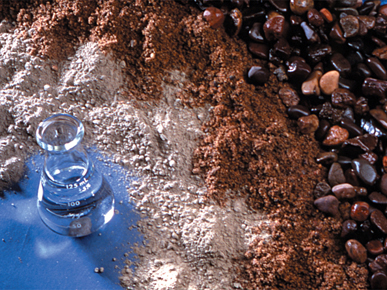
In its simplest form, concrete is a mixture of paste and aggregates (rocks). The paste, composed essentially of portland cement and water, coats the surface of the fine (small) and coarse (larger) aggregates. Through a series of chemical reactions called hydration, the paste hardens and gains strength to form the rock-like mass known as concrete.
Within this process lies the key to a remarkable trait of concrete: it's plastic and malleable when newly mixed, strong and durable when hardened. These qualities explain why one material, concrete, can build skyscrapers, bridges, sidewalks and superhighways, houses and dams.
The Portland Cement Association has sponsored research directed at extending the boundaries of technical knowledge in the field since 1916.
PCA information reflects the latest on standards, specifications, test methods and guides of ASTM International (ASTM), the American Association of State Highway and Transportation Officials (AASHTO), the American Concrete Institute (ACI), and the National Ready Mixed Concrete Association(NRMCA).
It addresses the properties of concrete needed in construction applications, including strength and durability, and provides guidance on all aspects of concrete from mix design to batching, mixing, transporting, placing, consolidating, finishing, and curing.
Cement Manufacturing Transparency Reporting
As an early industry sector responder to evolving green building requirements, PCA and its members were among contributors to the creation of 2014 Product Category Rules (PCR) on North American cements published by ASTM, Product Category Rules For Preparing an Environmental Product Declaration for Portland, Blended Hydraulic, Masonry, Mortar, and Plastic (Stucco) Cements. To see or download the PCR, click here.